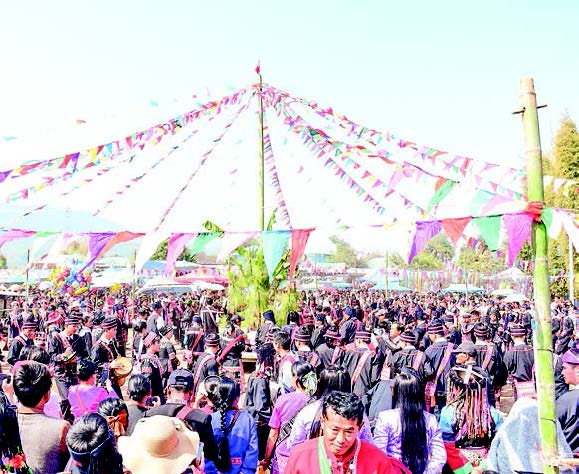THE Lahu ethnic group, known for its rich tradition of culture, literature, and history, celebrates its most sacred and grand festival—the collective New Year— when the pine trees bear buds and the cherry, apricot, and peach trees are in full bloom.
The Lahu New Year festival, celebrated since ancient times, is a joyful occasion where people donate rice, fruits, and belongings gathered throughout the year. A small pine tree is placed in the centre, around which people gather to play gourd flutes, perform a round dance, seek forgiveness, cleanse their sins, and young people also perform traditional hand-washing rituals for elders and respected individuals.
The 41st Lahu Ethnic Collective Traditional New Year Festival was held in Kengtung Township, following traditional customs, at 10:30 am on 1 February in Katzin Village, Mongzin Village-tract. The event was attended by Command Chief of Staff Brig-Gen Kyaw Htet from the Triangle Region Command along with officials, members of social organizations, local ethnic groups, and invited guests.
First, Brig-Gen Kyaw Htet delivered a speech and presented New Year gifts to the New Year Celebration Committee. Then, U Kya Le Soe, on behalf of the committee, delivered a New Year greeting, and a hand-washing ceremony was held in accordance with the traditional customs of the Lahu ethnic group. Afterwards, the Lahu ethnic group played gourd flutes while performing traditional cultural dances and songs. Officials and guests participated in the famous Myaywaing dance alongside the Lahu ethnic group, and honoured them with cash gifts.
The Lahu ethnic group currently resides in China, Myanmar, Thailand, Laos, and Vietnam, with a concentration in Shan State (East) and Shan State (North) in Myanmar. There are approximately 30 Lahu tribes. — Aung Zin Myint (IPRD)/TH


